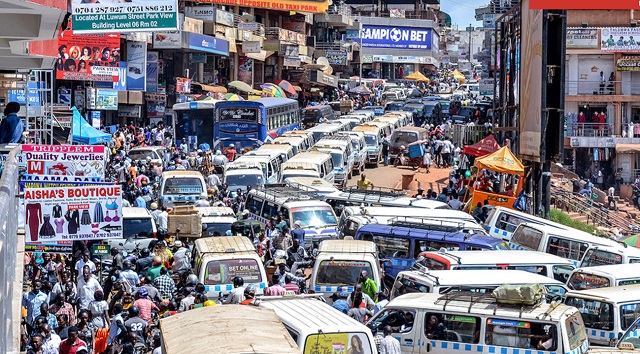
Kampala traffic gets big change
Baca Juga

What next as city’s busiest street goes car-less, gets recreation parks?
Kampala, Uganda | RONALD MUSOKE | Luwum Street has been one of the busiest motorized sections of Kampala city for years. Located just a block off the city’s main access; Kampala-Jinja Road, and connecting to the city’s main international gateway; Entebbe Road, Luwum often has bumper to bumper traffic from morning into late night.
Everyone appears to be in a hurry although everybody moves really slowly as the roads are jammed with cars, bodaboda taxi motorbikes, and human mules carrying heavy loads from one section to the other. Up to 90 percent of people in this area walk, yet the roads appear to have been designed for the few using motor vehicles. Moving on foot along this route is a tricky balancing act.
That is perhaps why, when the city planning authorities, mooted a plan to decongest the city, Luwum Street was top on the list. In the end, remaking the street has become a test case of Ugandan urban planning to favour the majority who either walk or cycle.
Kampala Capital City Authority (KCCA) is using Luwum Street to innovate a new city experience involving introduction of what are dubbed ‘pedestrian shopping streets.’
KCCA says the old Luwum Street of bumper-to-bumper motor vehicles will be redesigned into a car-less space with walking paths to encourage walking as a way of living healthy, wider green spaces for recreation, street benches and shades for tired shoppers.
Like many cities in the world, Kampala city’s public transport is highly polluted, congested and time/energy consuming.
In order to promote bicycling, walking and physical activity, cities and towns around the world are closing streets to cars and opening up to a variety of modes and uses. Using these temporary street closures, communities have safe and convenient opportunities for bicycling and walking.
Urban planning experts say half of all trips in Kampala are short and within cycling and walking distance with about two million people using public transport. Public transport continues to reflect challenges to city authorities and urban planners.
There are significant barriers within a city that discourages physical activity such as the presence of high volume, high-speed roads; safety concerns in street and side-walk design; poor air quality and lack of public parks.
Luwum Street faces all these challenges. But it is also no stranger to change. Historically it boasted the first shops in Kampala in the early 20th century and was renamed after a prominent Christian leader who was martyred during the Idi Amin reign of terror in the 1970s. But the coming change looks set to be the most dramatic and perhaps impactful.
Since April 2018, KCCA has been remodeling Luwum Street and its sister road, Namirembe Road. The two are in fact one 2km road, although the Namirembe section was so named possibly to indicate its direction to Namirembe Cathedral when it was constructed.
Together, Luwum and Namirembe literally cut through the centre of the city from north to south. From the north, the route carries all the traffic entering the city from the two main veins of Hoima Road with 40,000 vehicles per day and Gulu Highway with over 35,000 vehicles per day and the south Luwum Street is the main artery for cars going out of the city to the east along Kampa-Jinja Road with over 50,000 vehicles per day. Along the way they traverse some of the busiest motorized and human traffic locations in the city; two taxi parks, two main city markets and several bus parks.
The roads are also mostly lined with shopping malls, and the city’s main business hub; the Kikuubo area, and a few theatres. Throw in the hundreds of pedestrian that throng the area daily as bus or taxi passengers, traders, and shoppers and you have a true medley of moving bodies. KCCA wants to change that.
KCCA’s intervention is in line with the National Non-motorized Transport Policy whose primary objective is to increase the recognition of walking and cycling in transport planning and design. It revolves around provision of safe infrastructure for pedestrians and cyclists.
The Shs 4 billion project is funded by the government and other partners including the United Nations Environment Programme (UNEP) and UN-Habitat. It is being implemented as a pilot study to assess its efficiency in Kampala.
Under the plan, providing resources of walking and cycling in the city’s financial planning and developing and adopting universal design standards that provide for access to all sectors of the community will get more attention. The city will also improve regulation and enforcement to enhance safety for pedestrians and cyclists.
When The Independent recently visited the stretch, which takes about 20 minutes to walk, workers of Stirling Civil Engineering Ltd were busy marking some sections in the Bakuli area on one end of Namirembe Road to the north with green paint. On the northern end of Luwum Street, more workers appeared to be putting final touches on the pedestrian walkways. Work on the Luwum section started in November last year and was expected to last a month. But that was stretched and KCCA now says everything should be ready by March.
The post Kampala traffic gets big change appeared first on The Independent Uganda:.

0 Response to "Kampala traffic gets big change"
Post a Comment